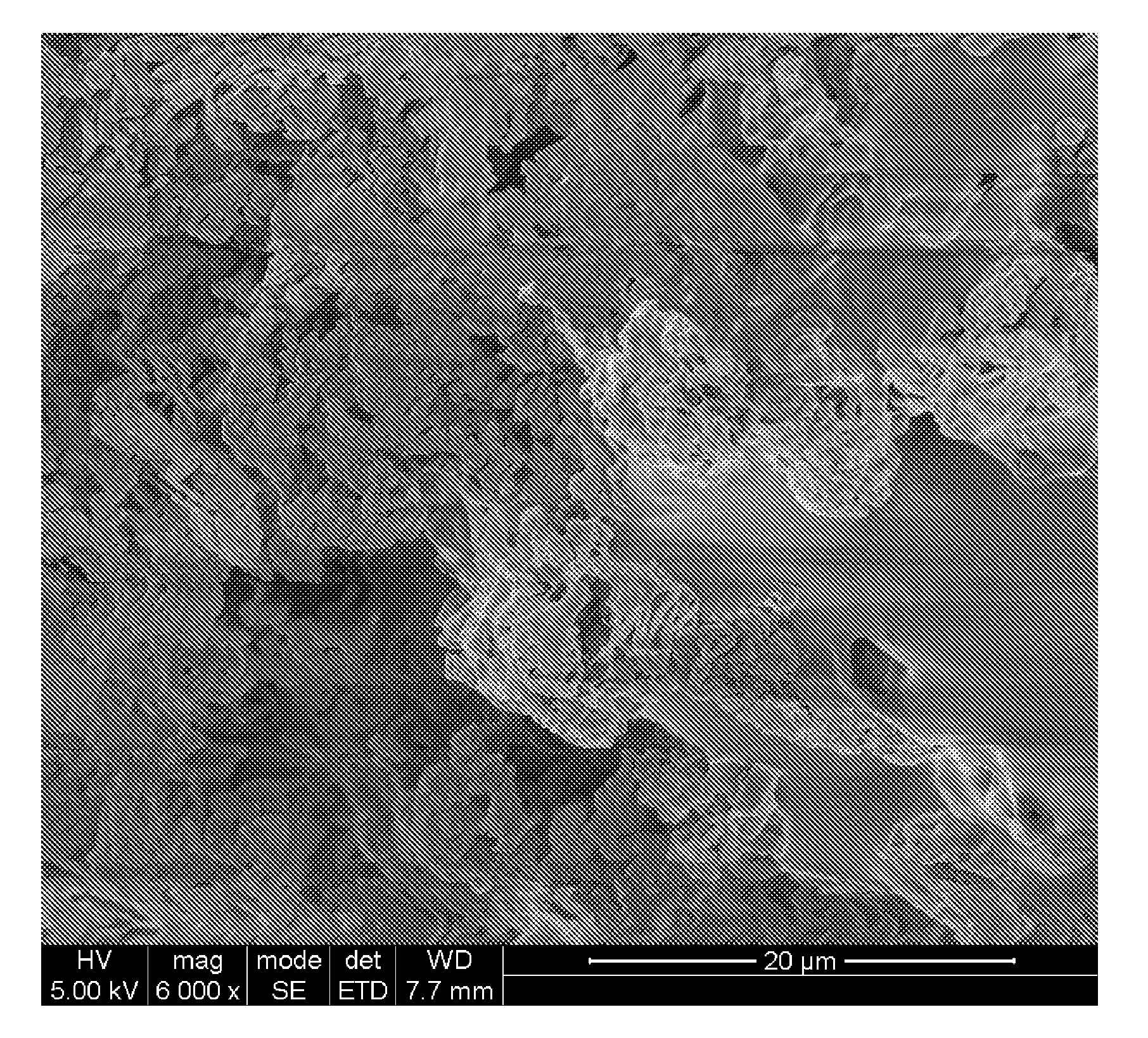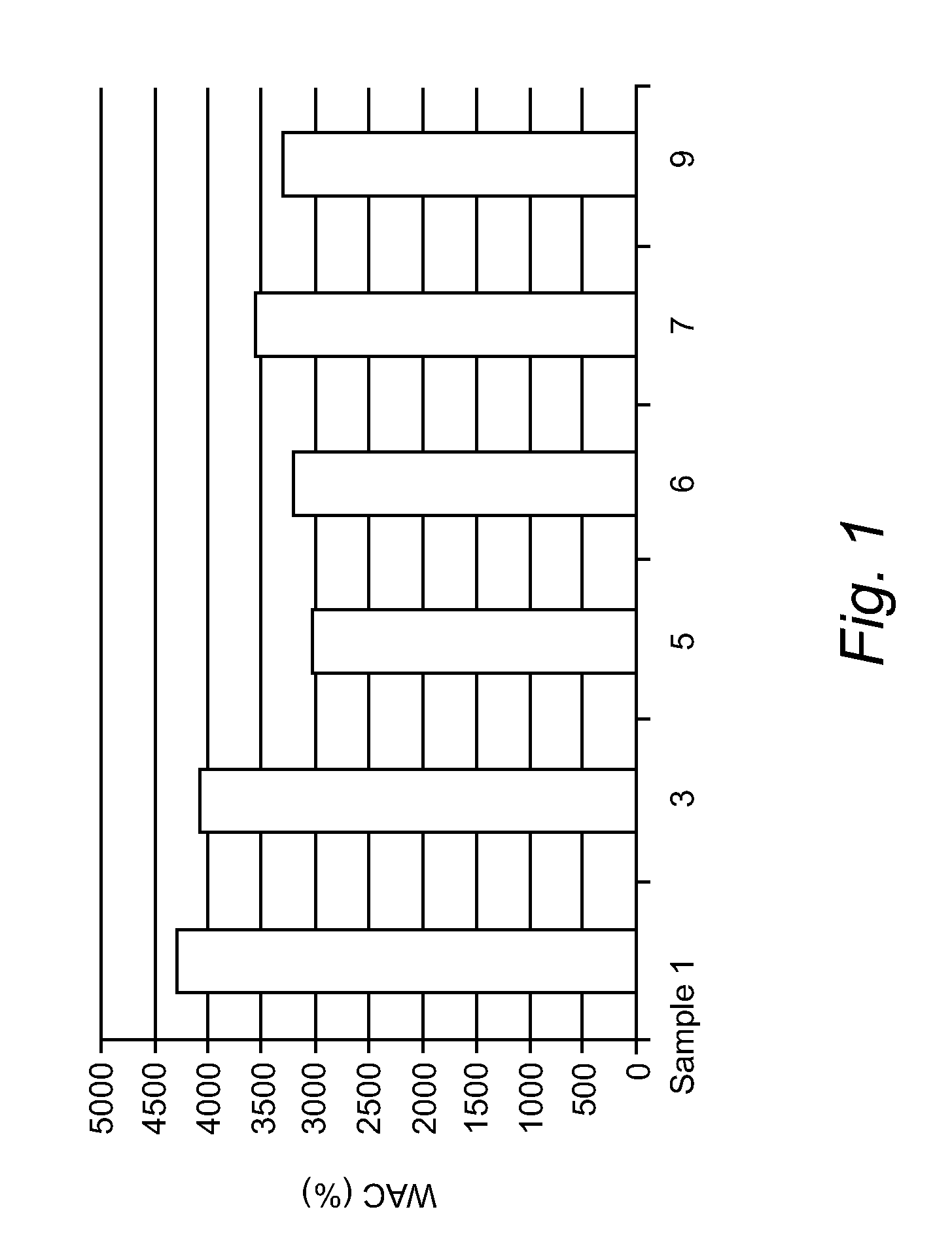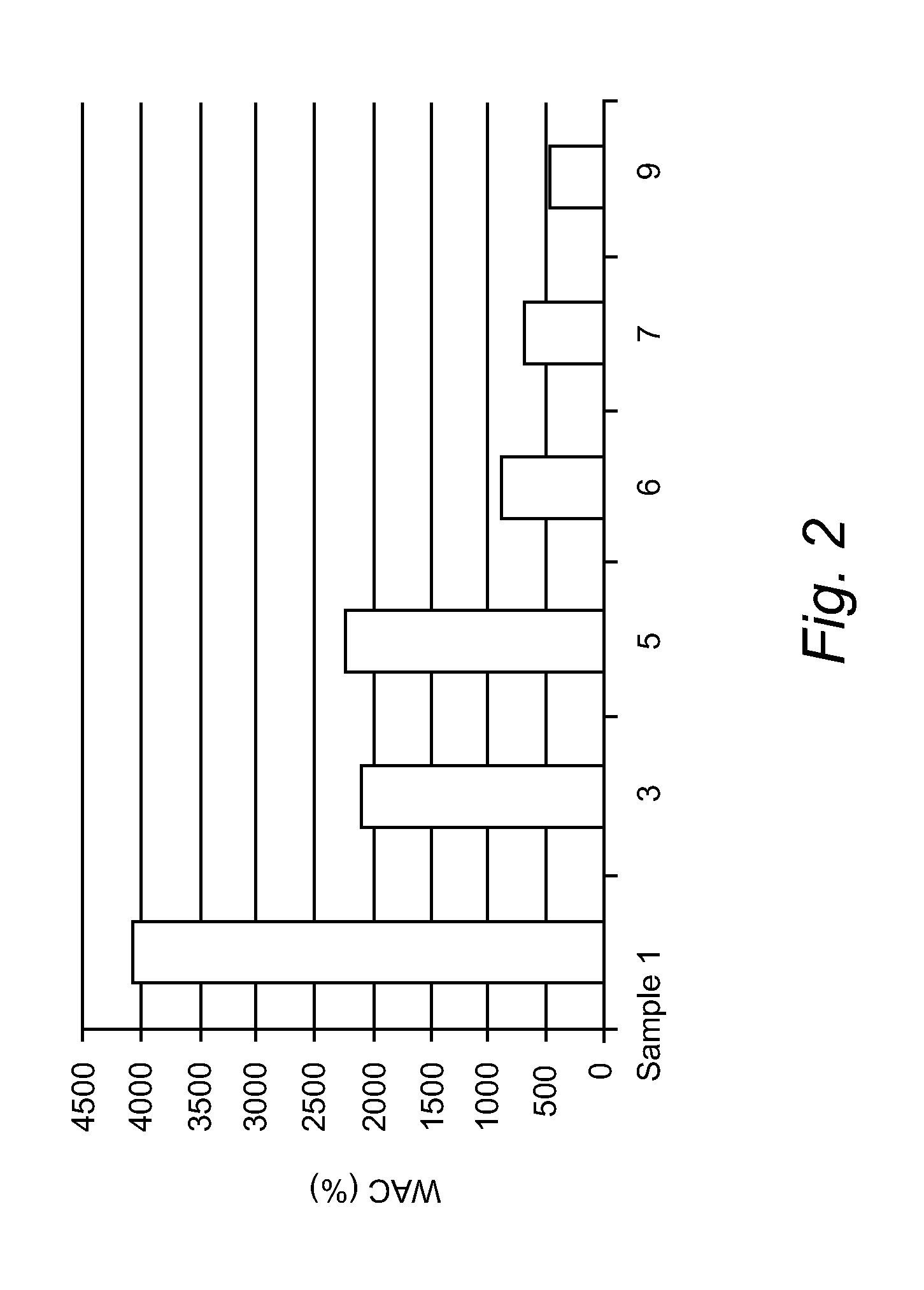Hyaluronic acid cryogel - compositions, uses, processes for manufacturing
a technology of hyaluronic acid and cryogel, which is applied in the field of hyaluronic acid cryogel, can solve the problems of unable to recover the pore structure after hydrogel formation, the effect of ha injection, and the difficulty of hydrogel formation recovery
- Summary
- Abstract
- Description
- Claims
- Application Information
AI Technical Summary
Benefits of technology
Problems solved by technology
Method used
Image
Examples
example 1
Preparation of the HA Cryogel
[0168]The solution of HA (MW 6000) (10 g), sodium hydroxide (2 g) in 60 ml of DMF / H2O (40 / 20) was degassed and after addition of 1 ml of BDDE and have a good mixing was slowly poured into a glass tube. The polymer solution in the tube was frozen and kept at −18° C. overnight. Then the tube was thawed at IPA and a spongy cryogel thus formed was washed thoroughly with IPA to remove the impurities and vacuum dried to obtain HA cryogel.
example 2
Preparation of the HA Cryogel
[0169]The solution of HA (MW 20,000) (10 g)), sodium hydroxide (2 g) in 60 ml water was degassed and after addition of 1 ml of BDDE and have a good mixing was slowly poured into a glass tube. The polymer solution in the tube was frozen and kept at −18° C. overnight. Then the tube was thawed at IPA and a spongy cryogel thus formed was washed thoroughly with IPA to remove the impurities and vacuum dried to obtain HA cryogel.
example 3
Preparation of the HA Cryogel
[0170]The solution of HA (MW 1,000,000) (10 g)), sodium hydroxide (2 g) in 60 ml water was degassed and after addition of 1 ml of BDDE and have a good mixing was slowly poured into a glass tube. The polymer solution in the tube was frozen and kept at −18° C. overnight. Then the tube was thawed and a spongy cryogel thus formed was washed thoroughly with IPA to remove the impurities and vacuum dried to obtain HA cryogel.
PUM
| Property | Measurement | Unit |
|---|---|---|
| temperature | aaaaa | aaaaa |
| molecular weight | aaaaa | aaaaa |
| molecular weight | aaaaa | aaaaa |
Abstract
Description
Claims
Application Information
 Login to View More
Login to View More - R&D
- Intellectual Property
- Life Sciences
- Materials
- Tech Scout
- Unparalleled Data Quality
- Higher Quality Content
- 60% Fewer Hallucinations
Browse by: Latest US Patents, China's latest patents, Technical Efficacy Thesaurus, Application Domain, Technology Topic, Popular Technical Reports.
© 2025 PatSnap. All rights reserved.Legal|Privacy policy|Modern Slavery Act Transparency Statement|Sitemap|About US| Contact US: help@patsnap.com



